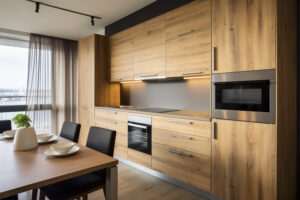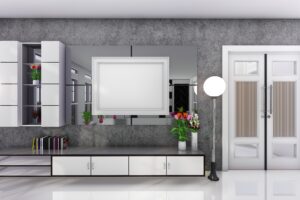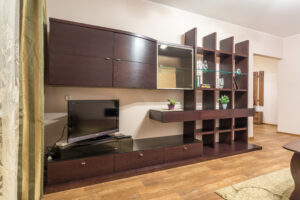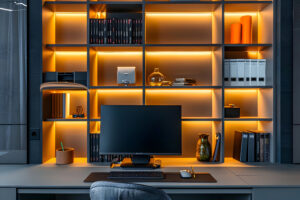 In the ever-evolving world of interior design, functionality and aesthetics must go hand in hand. One often overlooked but essential element in this fusion is the system cabinet. we believe that the right system cabinet can transform not only the organization of a space but also its entire look and feel. In this article, we will explore the significance, types, and integration of system cabinets in modern interiors, highlighting their role in achieving both style and efficiency.
In the ever-evolving world of interior design, functionality and aesthetics must go hand in hand. One often overlooked but essential element in this fusion is the system cabinet. we believe that the right system cabinet can transform not only the organization of a space but also its entire look and feel. In this article, we will explore the significance, types, and integration of system cabinets in modern interiors, highlighting their role in achieving both style and efficiency.
The Role of System Cabinets in Interior Design
System cabinets are versatile storage solutions that serve a multitude of purposes in residential and commercial spaces. They are designed to be modular, meaning they can be customized to fit the specific needs of a room or an entire building. This flexibility makes them invaluable in interior design, where every square foot must be optimized for both utility and visual appeal.
System cabinets can seamlessly blend into the background, or they can be the focal point of a room. For example, a sleek, high-gloss finish in a bold color can make a system cabinet the centerpiece of a modern living room, while a wood-grain finish can add warmth and texture to a more traditional space. The key is in the design and execution, where functionality doesn’t compromise beauty but enhances it.
Types of System Cabinets
System cabinets come in various forms, each serving different functions and fitting different design aesthetics. Here are some of the most common types:
1. Wall-Mounted System Cabinets

Wall-mounted cabinets are a popular choice in kitchens, bathrooms, and offices. They save floor space and create a clean, uncluttered look. These cabinets are ideal for storing items that need to be easily accessible yet out of sight, such as kitchenware, toiletries, or office supplies.
The design possibilities with wall-mounted cabinets are vast. They can be configured in a linear fashion for a sleek, modern look or arranged in a more asymmetrical pattern for a dynamic, artistic effect. With the option to include open shelving, glass doors, or concealed storage, wall-mounted cabinets can be as functional as they are stylish.
2. Freestanding System Cabinets
Freestanding cabinets offer flexibility in placement and can be moved as needed. These cabinets are often used in living rooms, bedrooms, and dining areas where they serve as storage for media equipment, books, and decorative items. Because they are not fixed to a wall, freestanding cabinets can act as room dividers or focal points in a space.
Freestanding system cabinets are available in a range of styles, from the ultra-modern with clean lines and minimal hardware to more ornate designs with intricate details. Their versatility makes them a staple in both contemporary and traditional interiors.
3. Built-In System Cabinets

Built-in cabinets are custom designed to fit specific spaces, making them ideal for awkward nooks, under-stair areas, or rooms with unique dimensions. These cabinets maximize storage space while maintaining a seamless look that integrates perfectly with the architecture of the room.
Built-in system cabinets are often found in kitchens, where they provide storage for appliances, cookware, and pantry items. However, they are also common in living rooms, bedrooms, and even bathrooms, where they can house everything from entertainment systems to clothing. The bespoke nature of built-in cabinets means they can be tailored to any style, whether that’s a minimalist design with flush doors and hidden handles or a more traditional look with decorative moldings.
4. Modular System Cabinets
Modular cabinets offer the ultimate in customization. These cabinets are made up of individual units that can be combined in various ways to create a storage solution that perfectly suits the user’s needs. This type of system is particularly popular in office environments, where storage needs may change over time.
Modular system cabinets are not limited to offices, though. They are also ideal for living rooms, bedrooms, and even kitchens, where they can be configured to store anything from books and media to clothing and kitchenware. The ability to add, remove, or rearrange units means that modular cabinets can evolve with the space, making them a long-term investment in both function and style.
Integrating System Cabinets into Your Space
When it comes to integrating system cabinets into an interior design, the possibilities are nearly endless. However, it’s essential to consider both the functional requirements and the aesthetic goals of the space.
1. Assessing Needs and Space

The first step in selecting the right system cabinet is assessing the needs of the space. What will the cabinets be used for? How much storage is required? What are the dimensions of the room? Answering these questions will help in determining the type of cabinet that will work best.
For example, a small kitchen may benefit from wall-mounted cabinets that save floor space while providing ample storage for cookware and utensils. In contrast, a spacious living room might call for a combination of built-in and freestanding cabinets that offer both storage and display space for books, media, and decorative items.
2. Choosing Materials and Finishes
The choice of materials and finishes is crucial in ensuring that the system cabinets complement the overall design of the space. For a modern, minimalist look, materials like glass, metal, and high-gloss lacquer are ideal. These materials reflect light and create a sleek, contemporary aesthetic.
For a more traditional or rustic look, wood is often the material of choice. Whether it’s a rich walnut, a warm oak, or a painted finish, wood adds warmth and texture to a space. Additionally, the choice of hardware, such as handles and knobs, can further enhance the style of the cabinets, whether it’s a sleek, modern pull or a more ornate, traditional knob.
3. Incorporating Lighting

Lighting plays a significant role in both the functionality and aesthetics of system cabinets. Integrated lighting, such as LED strips or recessed lights, can highlight the contents of the cabinets, making it easier to find items while also adding ambiance to the room.
In display cabinets, lighting can be used to showcase decorative items, such as glassware, artwork, or collectibles. In a kitchen or bathroom, under-cabinet lighting can provide task lighting that enhances the functionality of the space.
4. Considering Customization
One of the significant advantages of system cabinets is their ability to be customized. You can choose from unique dimensions, specialized storage solutions, or custom finishes.
Customization ensures that the cabinets not only fit perfectly in the space but also reflect the personal style and preferences of the client. Whether it’s a custom-built wine rack in a kitchen cabinet, a pull-out desk in a home office, or a concealed entertainment system in a living room, the possibilities are limited only by imagination.
Conclusion
System cabinets are more than just storage solutions, they are integral elements of interior design that enhance both the functionality and aesthetics of a space. we understand the importance of designing cabinets that meet the unique needs of each client while also contributing to the overall design vision. By carefully selecting the right type, materials, and customization options, system cabinets can transform any room into a space that is both beautiful and practical.
Ready to turn your dream home into reality? Book an appointment with E³.SPACE, and let us bring your vision to life.


